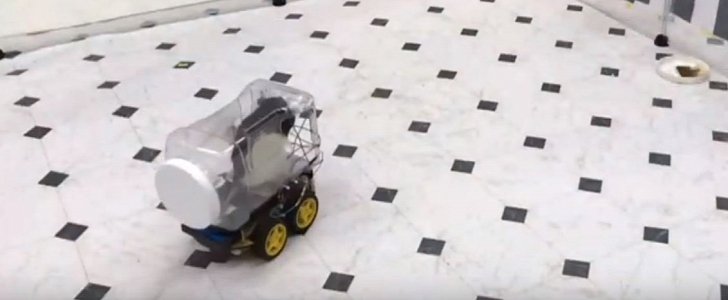Back in the days of World War II, Russian scientists taught dogs to run under enemy German tanks and blow them to smithereens. They were referred to as dog mines, because they carried anti-tank mines on their backs, which blew them apart along with the enemy.
In training the dogs for these suicide missions, the Russians used a concept called respondent conditioning (a.k.a Pavlovian conditioning) which basically says dogs can learn some course of action gives them food, and they will unconditionally perform that action every time conditions are met.
It this case, dogs were conditioned to believe the underbellies of enemy tanks hide food, hence they gladly ran to their deaths.
But dogs are rather complex creatures compared to say rats. These tiny beings, used in large numbers for experiments, are considered pretty dumb and extremely expendable. But people might have been wrong about them.
Earlier this week, news surfaced of rats being able to drive cars. This happened as part of an experiment conducted by a team from the University of Richmond in Virginia.
A total of 17 rats, both male and female, were taught that if they want to get some food – in this case Froot Loops – they will have to navigate their way to it by using a tiny motorized machine.
The toy-like vehicle was made of an empty plastic food container, perched on top of wheels and running on batteries. All the rats had to do for the car to drive was to touch three copper bars. Depending on which one they touched, the car steered.
The team soon found the rats were capable of complex maneuvering in order to get to their food.
“They learned to navigate the car in unique ways and engaged in steering patterns they had never used to eventually arrive at the reward,” said according to New Scientist Kelly Lambert, a member of the team.
So, what does this prove, aside for the fact most animals would learn to do pretty much anything to get some food?
Lambert says the test show the “neuroplasticity” of the rats' brains and the fact these little animals are more complex than believed. The experiment could lead to the replacing of traditional mazes with driving tests that in turn could lead to breakthroughs in Parkinson’s research, for instance.
“If we use more realistic and challenging models, it may provide more meaningful data,” the scientist concluded.
It this case, dogs were conditioned to believe the underbellies of enemy tanks hide food, hence they gladly ran to their deaths.
But dogs are rather complex creatures compared to say rats. These tiny beings, used in large numbers for experiments, are considered pretty dumb and extremely expendable. But people might have been wrong about them.
Earlier this week, news surfaced of rats being able to drive cars. This happened as part of an experiment conducted by a team from the University of Richmond in Virginia.
A total of 17 rats, both male and female, were taught that if they want to get some food – in this case Froot Loops – they will have to navigate their way to it by using a tiny motorized machine.
The toy-like vehicle was made of an empty plastic food container, perched on top of wheels and running on batteries. All the rats had to do for the car to drive was to touch three copper bars. Depending on which one they touched, the car steered.
The team soon found the rats were capable of complex maneuvering in order to get to their food.
“They learned to navigate the car in unique ways and engaged in steering patterns they had never used to eventually arrive at the reward,” said according to New Scientist Kelly Lambert, a member of the team.
So, what does this prove, aside for the fact most animals would learn to do pretty much anything to get some food?
Lambert says the test show the “neuroplasticity” of the rats' brains and the fact these little animals are more complex than believed. The experiment could lead to the replacing of traditional mazes with driving tests that in turn could lead to breakthroughs in Parkinson’s research, for instance.
“If we use more realistic and challenging models, it may provide more meaningful data,” the scientist concluded.


